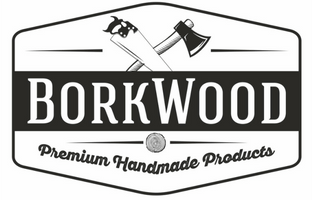Embracing Synergy and Sustainability: Core Principles of Industry 5.0
Industry 4.0 puts technology at the center of manufacturing. Machines got smarter and processes more optimized. However, Industry 5.0 signals a recalibration. It’s about finding the synergy between human workers and their technological counterparts. This model isn’t driven solely by efficiency gains but by the desire to unlock the full potential of both human skill and advanced technology, working in harmony.
-
Hyper-Customization: Meeting Unique Consumer Needs Through Flexible Production Systems
The days of mass production churning out identical products are fading. Industry 5.0 is about delivering what consumers truly crave: goods tailored to their specific needs, tastes, and even values. Personalization isn’t just a trend, but it’s becoming the new consumer’s expectation.
Industry 5.0 empowers manufacturers to meet this challenge by facilitating unprecedented flexibility. Here’s how this unfolds:
- The Power of Data: Customer preferences, collected through direct interactions and market insights, become a driving force in design.
- Software is King: Real-time adjustments to digital designs and production planning become the norm as consumer input is seamlessly integrated into the manufacturing process.
- Robots as Collaborators: Cobots and easily reconfigurable robotic systems work seamlessly alongside humans, allowing for swift adjustments and smaller production batches.
- 3D Printing’s Mainstream Moment: Additive manufacturing steps in to produce highly customized components, or even whole products, without the need for retooling and extended setup times.
Hyper-customization in Industry 5.0 transcends niche products. Examples are beginning to appear in:
- Personalized Healthcare: Medical devices and even medication tailored to a patient’s specific needs.
- Consumer Goods: Clothing, furniture, and even everyday items configured to the buyer’s exact style and specifications.
Enabling hyper-personalization unlocks latent market potential, allowing manufacturers to cater to increasingly discerning consumers.
-
Human-Centricity: Elevating Workers’ Skills and Creativity, Empowering Them Through Technology
Industry 5.0 recognizes that the most valuable asset on the factory floor isn’t the machines, but the human mind.
Industry 5.0 stresses the unique human capacity for problem-solving, innovation, and the nuanced judgment that technology cannot yet replicate.
Here’s how Industry 5.0 places workers at the forefront of the manufacturing process:
- Beyond Button Pushers: Automation handles repetitive and dangerous tasks, freeing up workers to focus on higher-level functions like quality control, process optimization, and complex troubleshooting.
- Data-powered Decision Makers: Real-time information presented in intuitive formats empowers frontline workers to make informed choices, improving both efficiency and overall performance.
- Upskilling for the Future: Extensive training in robotics, data analysis, and emerging technology makes workers indispensable partners in Industry 5.0’s collaborative model.
- Augmented Reality Assistance: AR tools provide on-the-job guidance, accelerating learning curves, and minimizing the risk of errors that impact productivity.
- Fostering a Culture of Creativity: Industry 5.0 encourages worker-driven suggestions for improvement, leveraging their knowledge and fostering a sense of ownership in the manufacturing process.
The human-centric factory isn’t about fearing obsolescence; it’s about unlocking new levels of expertise and job satisfaction. Workers evolve into collaborators and problem-solvers, forming a resilient, highly skilled workforce equipped to navigate the complexities of the modern industrial landscape.
-
Sustainability Focus: Prioritizing Environmental Goals, Circular Economy, and Resources Efficiency
Industry 5.0 acknowledges that manufacturing can’t exist in a vacuum. It must align with the pressing need to protect our planet and conserve resources for future generations. Sustainability isn’t just an add-on; it’s woven into the very fabric of this new industrial model.
Here’s how this focus manifests itself:
- Eco-Efficiency by Design: Products are created with their entire lifecycle in mind– ease of disassembly, recyclability, and minimal environmental impact become key metrics alongside performance
- The Circular Revolution: Industry 5.0 embraces closed-loop systems, where waste is repurposed as input material or a source of energy. Collaborative networks may emerge between different businesses, each finding value in another’s byproducts.
- Data-Driven Resource Optimization: Every drop of water, every kilowatt of power is tracked, allowing targeted reduction plans and minimizing waste.
- Renewable Energy Integration: Smart grids and AI-powered energy management optimize the use of on-site solar, wind, and other clean power sources.
- Transparency as Standard: Blockchain and similar technologies allow tracking the origin of raw materials, ensuring ethical sourcing and verifiable sustainability practices.
The sustainability push in Industry 5.0 transcends altruism. It’s a matter of longevity and resilience in a world facing resource scarcity and increased environmental scrutiny from both consumers and regulators.
-
Resilience: Ability to Rapidly Adapt to Disruptions
Industry 5.0 acknowledges that manufacturing can’t exist in a vacuum. It must align with the pressing need to protect our planet and conserve resources for future generations. Sustainability isn’t just an add-on; it’s woven into the very fabric of this new industrial model.
Here’s how this focus manifests itself:
- Eco-Efficiency by Design: Products are created with their entire lifecycle in mind– ease of disassembly, recyclability, and minimal environmental impact become key metrics alongside performance
- The Circular Revolution: Industry 5.0 embraces closed-loop systems, where waste is repurposed as input material or a source of energy. Collaborative networks may emerge between different businesses, each finding value in another’s byproducts.
- Data-Driven Resource Optimization: Every drop of water, every kilowatt of power is tracked, allowing targeted reduction plans and minimizing waste.
- Renewable Energy Integration: Smart grids and AI-powered energy management optimize the use of on-site solar, wind, and other clean power sources.
- Transparency as Standard: Blockchain and similar technologies allow tracking the origin of raw materials, ensuring ethical sourcing and verifiable sustainability practices.
The sustainability push in Industry 5.0 transcends altruism. It’s a matter of longevity and resilience in a world facing resource scarcity and increased environmental scrutiny from both consumers and regulators.
Conclusion
IIndustry 5.0 heralds a transformative epoch where the symbiosis of human creativity and advanced technology gives rise to smarter, more sustainable, and highly personalized production processes. It represents a future where the workforce is empowered by machines, not replaced by them, and where industries can prosper while preserving the planet for future generations. The core principles of Industry 5.0—collaboration, customization, and sustainability—are not mere guidelines but essential tenets for a resilient and thriving global economy. They encourage businesses to look beyond profits, to nurture a culture of innovation that cherishes the human element, and to adopt practices that promote environmental stewardship. As we step into this new era, it becomes clear that the success of Industry 5.0 will not only be measured by technological advancements but also by the well-being of human society and the health of the ecological systems that sustain us. By embracing these core principles and utilizing smart line balancing software, industry leaders, policymakers, and workers can collectively forge a future that balances efficiency with empathy, and progress with purpose, thus ensuring a harmonious coexistence of man, machine, and nature.







